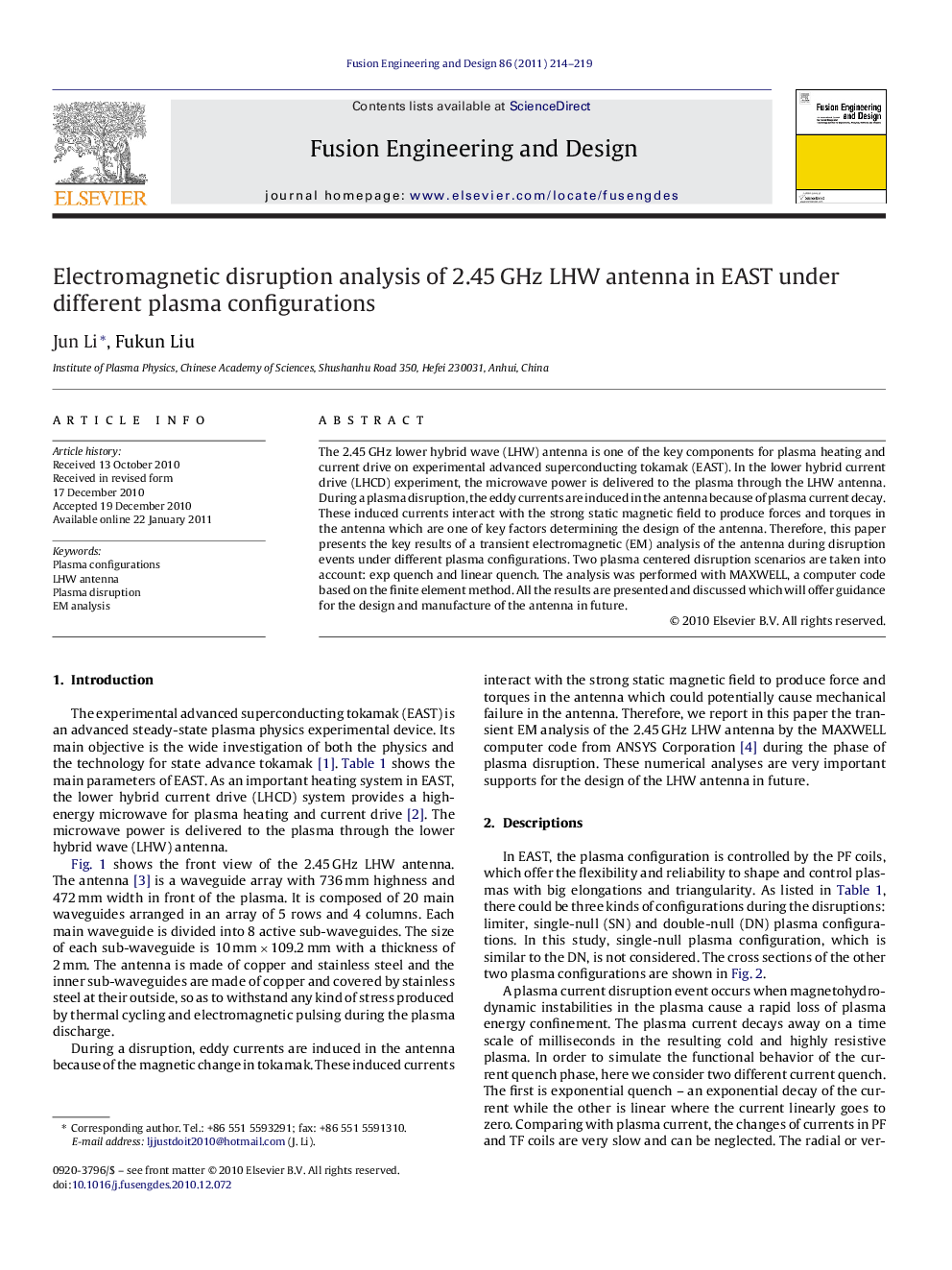| Article ID | Journal | Published Year | Pages | File Type |
|---|---|---|---|---|
| 272582 | Fusion Engineering and Design | 2011 | 6 Pages |
The 2.45 GHz lower hybrid wave (LHW) antenna is one of the key components for plasma heating and current drive on experimental advanced superconducting tokamak (EAST). In the lower hybrid current drive (LHCD) experiment, the microwave power is delivered to the plasma through the LHW antenna. During a plasma disruption, the eddy currents are induced in the antenna because of plasma current decay. These induced currents interact with the strong static magnetic field to produce forces and torques in the antenna which are one of key factors determining the design of the antenna. Therefore, this paper presents the key results of a transient electromagnetic (EM) analysis of the antenna during disruption events under different plasma configurations. Two plasma centered disruption scenarios are taken into account: exp quench and linear quench. The analysis was performed with MAXWELL, a computer code based on the finite element method. All the results are presented and discussed which will offer guidance for the design and manufacture of the antenna in future.
